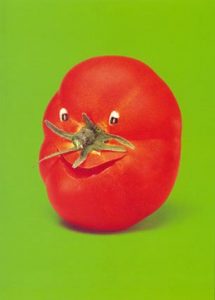Sunderarajan Padmanabhan of Biotech Times writes that E. coli and Salmonella bacteria are the most common causes of food poisoning. Although most Salmonella outbreaks are linked to contamination during handling and transportation of the vegetables, there are also cases where the infectious bacterium had entered the plant when it was still in the farmland.
 A new study by researchers at the Indian Institute of Science (IISc) and the University of Agricultural Sciences (UAS), Bengaluru, has solved the mystery.
A new study by researchers at the Indian Institute of Science (IISc) and the University of Agricultural Sciences (UAS), Bengaluru, has solved the mystery.
They have found that unlike other disease-causing bacteria that enter the root, fruit or leaf by producing enzymes to break down the plant’s cell wall, Salmonella sneaks in through a tiny gap created when a lateral root branches out from the plant’s primary root.
The researchers were studying how different types of bacteria colonize the roots of tomato plants. While other bacteria were spread across the root, Salmonella clustered almost exclusively around areas where lateral roots emerge. When a lateral root pierces open the wall of the primary root to spread across the soil, it leaves behind a tiny opening. They figured out that it was entering through the gap with the help of fluorescent tagging and imaging.
They also noticed that under same conditions a plant with a greater number of lateral roots harbored a greater concentration of Salmonella than one with fewer lateral roots. Similarly, when plants were artificially induced to produce more lateral roots, Salmonella concentration increased.
Tomatoes plucked from these plants also tested positive for Salmonella infection, revealing its ability to travel all the way up to the fruit. “It is just like a systemic infection in humans,” said senior author Dipshikha Chakravortty, Professor, Department of Microbiology and Cell Biology, IISc. The researchers have published a paper on their work in the journal, BMC Plant Biology.
Kapudeep Karmakar, Ph.D. student in the Department of Microbiology and Cell Biology, IISc, and first author of the paper, noted that there are several possible sources from where Salmonella can reach the soil, such as manure containing animal faeces or contaminated irrigation water.
“Various studies show that irrigation water gets contaminated by sewage water. When that irrigation water is applied in the field, the soil becomes the portal for Salmonella to enter,” he said.
